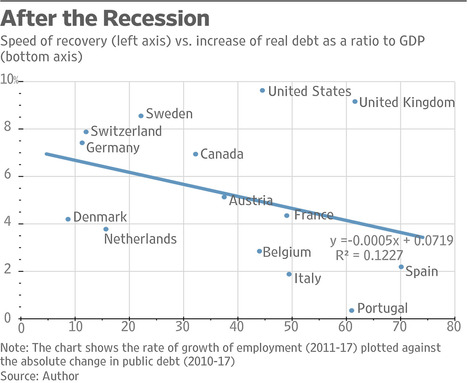(p. B2) JACKSON CENTER, OHIO–Airstream’s factory here is racing to fill a backlog of orders for its retro, high-end travel trailers that spans well into next year. The company is hiring, adding dealers and spending $50 million to build a bigger plant.
I counted eight workers climbing through an Airstream to bolt a hulking aluminum shell to a steel chassis, and snake fluid lines and wires through walls. To finish the shiny, silver capsule off, workers will need to install 3,000 rivets by hand.
There’s not a robot in sight. They may speed production, but the machines require a substantial investment that risks being wasted if the economy slumps
. . .
“We see in U.S. manufacturing a race between technology and human capital,” Stanford University economist Nicholas Bloom said. While some companies like electric-car maker Tesla Inc. are racing to automate almost every process on the factory floor, he said many executives are reluctant to sink investments in equipment that “will be hard to reverse.”
. . .
Robotics spending is forecast to equal $90 billion in 2018, according to researcher International Data Corp., with a hefty chunk of that investment aimed at industrial or manufacturing uses. That is a considerable increase compared to prior years, but it is only a sliver of the nearly $3 trillion committed to capital investment.
John Van Reenen, a Massachusetts Institute of Technology economics professor and Mr. Bloom’s research partner, said executives in many industries –including health care and retailing–aren’t sold on the technical revolution. “There is a big debate on whether robots are really delivering on the productivity benefits they might promise.”
At an event to commemorate the revamp of a factory west of Detroit last month, Ford Motor Co.’s president of global operations, Joe Hinrichs, said a lot of industrial automation happened several decades ago. Now companies are trying to “optimize how they use people” rather than install more machines.
Ford spent nearly $1 billion converting the factory to go from making small cars to producing pickup trucks. Much of that went toward new tooling for stamping out body parts, but relatively little went toward adding automation, Mr. Hinrichs said. Artificial intelligence is now integrated into the final inspection lines to boost quality. But skilled workers are needed to interact with the AI tools.
Mr. Bloom said incremental efforts like this are helping boost worker productivity, even if at a lower rate than was experienced during the decadelong boom that started in the mid-1990s. He said economists may need to get comfortable with 1% annual productivity gains, particularly because it takes a lot of investment just to maintain that modest rate.
For the full commentary, see:
John D. Stoll. “ON BUSINESS; Humans Are Winning the Battle With Robots.” The Wall Street Journal (Saturday, Nov. 3, 2018): B2.
(Note: ellipses added.)
(Note: the online version of the commentary has the date Nov. 1, 2018.)

